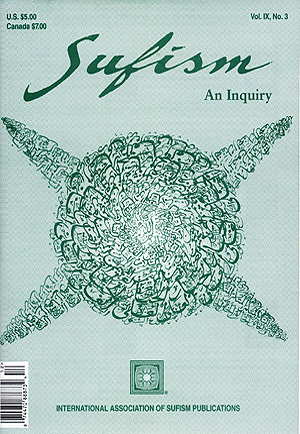|
Whereas
Christianity, from its advent, had to adhere to Roman law, Islamic
law, from its advent, sought to minimize ‘urf, or customary
laws, and establish its own legal tradition. Islamic law prevailed
in countries with high Muslim populations so that the Sharì’a
became the dominant legal tradition. Islamic law faced, and still
faces, the unique challenge of developing alongside the establishment
of modern nation-states while ensuring the ethical rights and livelihood
of all its citizens, Muslim and non-Muslim alike.
The evolution of the Sharì’a can be divided into five
phases, loosely labeled as: initial, systematization, secularization,
modernization, and remodification. As mentioned in “Part One:
An Introduction”, both the Prophet (pbuh) and the Rashidin1
(first four ‘Rightly Guided’ Caliphs) alone had the power
of positive legislation and, therefore, there was no cause to establish
a separate legal system outside their authority during the first
phase. The legal structure of Islam began as a result of the consolidation
efforts under the Umayyads2 , which focused
on developing systematized Islamic institution. This institutionalization,
in its rudimentary form, is highlighted by the creation of the position
of qadi, or judge, whose primary function was to settle disputes,
which later evolved to autonomous legal administrators. By this
time, the five objectives of Islamic law were defined as the right
to life, mind, property, family, and religion. With these objectives
in mind, jurists sought (and still seek) to develop regulations
based on: Qur’an, Hadith, ‘aql (intellect),
ijma’ (consensus of scholars), qiyas (anological deduction
of a law), fatwa (judgement) of the Companions, istihsan
(equity), maslaha (public interest), ‘urf (local
customary precedent), and istishad (exercise of reason).
A myriad of sources were used in early Islamic legal tradition during
the Umayyad period, including elements of foreign law (especially
Sasanian Persian).3
Eventually, the Islamic community grew disappointed with Umayyad
dynasty, believing the legal tradition departed from the classical
Medinan example set forth by the Prophet (pbuh) and the Companions
(pbuh). Pious scholars began to give voice to their ideas regarding
standards of conduct that represent the fulfilment of the true Islamic
religious ethic. Grouped together for this purpose, in loose, studious
fraternities, they formed, in the last decades of Umayyad rule,
the early schools of law. The following ‘Abbassid dynasty incorporated
these emerging legal scholars, who were predominately from the religious
sector, into the administrative system in an attempt to integrate
their legal practice with the practice of the courts. Their main
focus was to review local practice in light of Islamic principles
as detailed in the Qur’an and Hadith and decided whether to
maintain or overturn the practices. The ‘Abbassid support for
the early reformation of legal practice may have been rooted in
their attempt to change tribal Arab allegiances to a unified Islamic
allegiance.
It is difficult to determine when the schools of law developed in
their modern form since no detailed account is recorded. Although
the central ‘government’ had an influence on the development
of the schools, the major component in the systemization of the
Sharì’a was the self-identification of legal scholars
with a certain school of thought associated with a region. Ibn Khaldun
(d. 806/1408) is the earliest scholar to address the formation of
the schools, dedicating a section of his Prolegomena to describing
the change in focus from the Iraqi, qiyas-based school of
jurisprudence and the Hijaz, hadith-based school of jurisprudence.
Modern scholars depict the early geographical units of jurisprudence
as having developed a minimum consensus on their doctrines. Both
schools became associated with their foremost scholars, Abu Hanifah
in Iraq and Malik in Hijaz, where they developed a community of
disciples. Iraqi jurisprudence had a greater tendency to incorporate
Zoroastrian and Roman law into their legal doctrines.
The rise of the Traditionalist (ahl al-hadith) movement in
Hijaz, which was based on the authority of the Hadith, is identified
as the fundamental cause for the movement away from regional schools
to those developed on collections of the legal writings of scholars.
Traditionalists disagreed with the incorporation of pre-Islamic
customs into jurisprudence and called for a more rigid adherence
to the Qur’an. The hadith-minded viewed the Qur’an and
the Hadith as the only legitimate sources of law whereas the scholars
relied on legal tradition as well as personal discretion. This division
between the legal-minded and the hadith-minded began the evolution
in jurisprudence towards the current model of madhabs (schools of
law).
After the systematization of the Sharì’a, each Islamic
country went through three phases of development: secularization,
modernization, and remodification. During the initial phase, which
began around 1850, there was a clear dichotomy in the law between
the secular criminal and commercial codes of foreign inspiration
and the rigid, unchallenged family and personal laws of the Sharì’a.
However, although the criminal and commercial codes were predominantly
Persian and French in origin, they did include a number of provisions
taken from the Sharì’a and all were in accordance with
Islamic law. The
dichotomy was accentuated by the emergence of parallel legal systems:
the Sharì’a courts which were staffed by the ulema and
continued the tradition of the madhab and the secular courts which
were staffed by Western education judges and lawyers who adopted
European legal thought.
During
the modernization phase, which began around 1915, the process of
reform extended into the family law of Islam. In contrast to the
civil and criminal laws, family law was not openly secularized,
rather, it was reformed within an Islamic framework. For example,
the principle of takhayyur (the principle of choosing between
authorities of the past) allowed the ulema to turn to a broader
range of legal scholars within the Sunni and Shi’a traditions.
The extensive adoption of various Islamic legal practices to family
law allowed the Sharì’a courts to be administered by
traditional as well as modern jurists. Thus, it is not surprising
to discover that this phase of reform was introduced with varying
degrees of cooperation from the ulema, who recognized a need
to modernize the Islamic legal system in order to preserve it.
During
the final phase of remodification, which paralleled the modernization
phase, the civil law was revised in light of the changing attitude
of the ulema towards modernization. Rather than borrowing a foreign
code, the ulema believed that a system of law adequate for
modern life could be derived from the principles of the Sharì’a.
Thus, after 1915, the dichotomy between secular law and the Sharì’a
was blurred so that both Islamic and secular laws are permeated
by principles derived wholly or in part from the other.
The legal system of Islamic countries can be loosely branched into
three main groups: those that still apply the Sharì’a
as the fundamental law (ex: Iran), those that have replaced the
Sharì’a with wholly secular laws (ex: Turkey), and those
that have reached a compromise between the two positions (ex: Egypt).
The modern schools of law consist of four Sunni schools (Hanafi,
Hanbali, Maliki and Shafi’i) and three Shi’a schools (Ja’fari,
Isma’ili, and Zaydi).4 The legal traditions
often diverge on their approach of and reliance on the sources of
Islamic law.5 Although all six schools are
rooted in the same process of development and in the same religion,
there is much variance in the methods of jurisprudence. For example,
legal scholars vary on their reliance on the Hadith depending upon
levels of authenticity.6 Which Hadith one
chooses to accept can significantly change the rule and application
of law, especially with respect to family law and inheritance rights.
The Hanafi tradition, which includes about seventy percent of the
Sunni population, is characterised by the importance placed on the
qadi’s belief and theories. With their heavy use of
ra’y in the development of Islamic law, the Hanafi school
is often attacked by Ahl al-Hadith. With a small number of disciples
throughout the Arabic Islamic regions, the Hanbali school is rooted
in the Traditionalist movement, ahl al-Hadith, and has a
literal interpretation of the Qur’an and Hadith . . .
.
. . to be continued
To read the rest of this article,
press the subscribe button below and order
Volume 9, Number 3 from our Archive Page,
and while you are there you can subscribe
so you never miss another issue!

_____________________________________________
1 The Rashidin (pbuh) refers to the first four ‘Rightly-Guided’
Caliphs: Abu Bakr, Omar, Uthman and Hazrat Ali.
2 This primarily occurred during the second half of the Umayyad
Dynasty during the second Islamic century (eighth Gregorian century).
3 Orientalists often characterize the use of foreign law as an ‘infiltration’
that greatly influenced the development of Islamic law. This is
a fallacy as evidence clearly indicates that early jurisconsults
only incorporated elements of foreign law into the Sharì’a
when they were certain that it coincided with the sources of Islamic
law.
4 Traditional and modern scholars often divide the schools of Islamic
law into the four Sunni schools (Hanafi, Hanbali, Maliki, and Shafi’i).
In so doing, they often ignore the contributions of Shi’a scholars
to legal thought, especially from Imam Jafar al-Sadiq (pbuh), the
sixth Shi’a Imam. It is more academically and philosophically
sound to discuss the Sharì’a with respect to seven schools
of law.
5 Qur’an, Hadith, ‘aql, ijma’, qiyas, fatwa of the
Companions, istihsan, maslaha, ‘urf, and istishad.
6 Hadith has three levels of authenticity: (1) mutawatir, where
there are multiple accounts of the Hadith from reliable, authoritative
sources; (2) mashhur, where there are two accounts of the Hadith;
and (3) ahad, where there is only one account.
Seyedeh Sahar Kianfar completed her Masters in Islamic Studies at
the University of Cambridge, England, with an emphasis in Islamic
jurisprudence.
|

![]()
![]()





